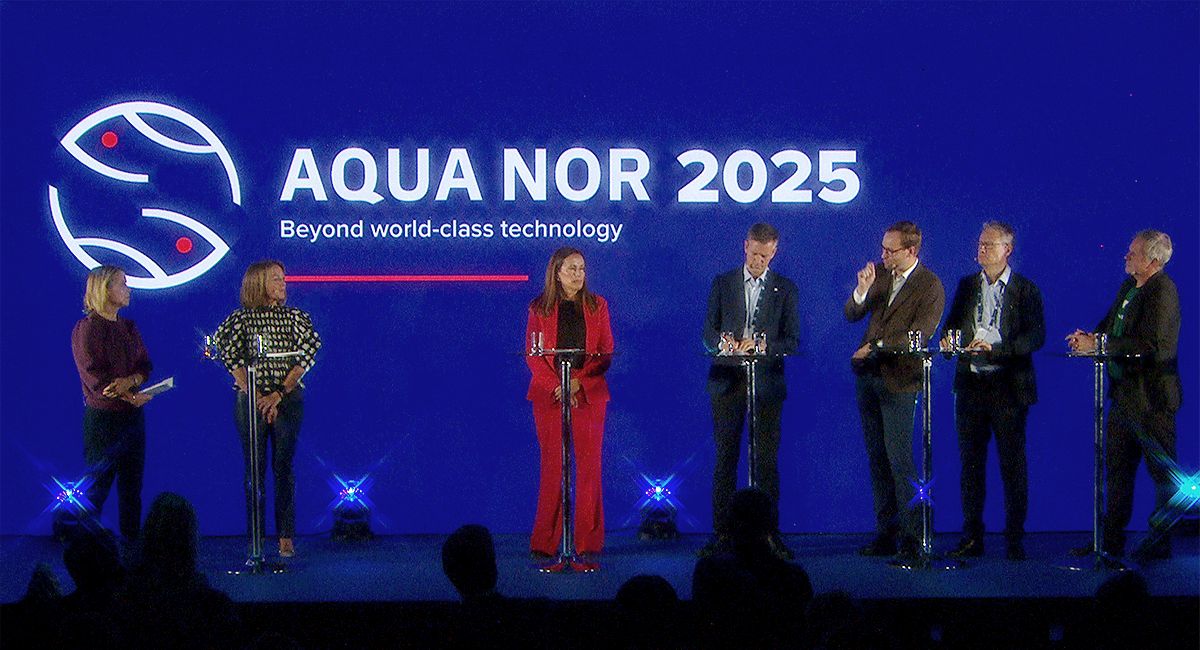
Regulatory conditions for the aquaculture industry heavily debated at Aqua Nor
19. August 2025 · Ukategorisert
On the opening day of the exhibition, the stage was set for a debate in front of a packed conference hall. For the first time, the Norwegian Veterinary Institute released semi-annual figures showing mortality so far this year – which laid the foundation for a constructive panel debate between the industry and politicians.
Political editor at Adresseavisen, Siv Sandvik, began the debate by inviting Ingunn Sommerset from the Norwegian Veterinary Institute to the stage to present semi-annual figures on fish mortality.
Reducing mortality is perhaps the industry’s most important issue – both for animal welfare and profitability. Sommerset was clear that the database is somewhat uncertain because subsequent reporting can change the picture.
— At the same time, it is difficult to conclude whether the trend is positive or not, because we see a change in which categories of losses are reported. The current snapshot shows that mortality so far this year is 7.3% compared to 8.8% at the same time last year, Sommerset said from the stage.
In summary, the figures from the Veterinary Institute show no significant changes in reportable diseases, but an indication of reduced mortality in the west.
Calls for predictability
Line Ellingsen, vice president of NHO, chairman of Seafood Norway and owner of Ellingsen Seafood, took the stage to comment on the figures on behalf of the aquaculture industry. Ellingsen believes the indication is encouraging but does not want to celebrate too soon.
— We must work together with politicians to turn around mortality. As an industry, we must continue to focus on working with biosecurity – and politicians must be on the ball when the regulations are formed centrally in the EU, said Ellingsen and called for predictability from politicians about how the industry is taxed.
Regulatory conditions heavily debated
The politicians were then invited to the stage to discuss the framework conditions for operating fish farming in Norway. Today’s panel consisted of:
- Marianne Sivertsen Næss (Ap)
- Erling Sande (SP)
- Sivert Bjørnstad (FRP)
- Olve Grotle (H)
- Alfred Bjørlo (V)
Topics such as tax, the knowledge base for reporting losses, and customs were discussed. The first half of the debate centered around the Parliamentary reports that came out earlier this year.
Overall, the politicians agreed that measures must be taken to reduce mortality, but there is disagreement about which model is most suitable. Among other things, the loss-tax was mentioned by everyone.
The representative of the Liberal Party was clear that the industry is already heavily taxed. The Center Party’s Sande was critical of whether the loss tax is a disguised tax that will only provide income to the state without reducing mortality and advocated spending more time assessing possible measures.
Næss, from the Labor Party, believed that individual incentives could stimulate good fish welfare.
Ellingsen, also participated in the debate, summarized the industry’s perspective like this:
— First and foremost, we must have a common knowledge base on which to make decisions. Our dream is to have an overarching organ that takes control and looks at the industry from a macro perspective.